In the ever evolving landscape of education, the traditional methods of storing, verifying, and sharing academic credentials are undergoing a revolutionary transformation, thanks to blockchain technology. This groundbreaking approach promises to address longstanding issues related to credential fraud, inefficiency in verification processes, and the lack of a secure and universally accessible credentialing system. In this article, we will explore how blockchain is reshaping the future of academic credentials, offering a decentralized and tamper proof solution.
The Challenge of Traditional Credentialing
Traditional academic credentialing systems have long been plagued by challenges such as document forgery, slow verification processes, and a lack of standardization. Paper based certificates and transcripts are susceptible to fraud, with instances of fake degrees compromising the integrity of educational institutions and the credibility of graduates. Moreover, the process of verifying academic records is often time consuming, requiring manual checks and communication between institutions.
Enter Blockchain Technology
Blockchain, the decentralized and distributed ledger technology that underlies cryptocurrencies like Bitcoin, has emerged as a transformative force in various industries, including education. At its core, blockchain provides a secure, transparent, and tamper proof way to record and verify transactions. When applied to academic credentials, it creates a system that is resistant to fraud and offers efficient verification mechanisms.
How Blockchain Works for Academic Credentials
Decentralization and Immutability:
Blockchain operates on a decentralized network of computers, known as nodes. Academic credentials are stored in blocks that are linked and secured through cryptography. Once a block is added to the chain, it becomes immutable, meaning that the information it contains cannot be altered or tampered with.
Secure Hashing:
Each academic credential is represented by a unique cryptographic hash a digital fingerprint generated by complex algorithms. This hash is stored on the blockchain, ensuring the integrity of the credential. Even a minor alteration in the credential would result in a completely different hash, immediately signaling foul play.
Smart Contracts for Verification:
Smart contracts, self executing contracts with the terms of the agreement directly written into code, play a pivotal role in blockchain based credentialing. Educational institutions can embed verification criteria into smart contracts, automating the validation process. This reduces the need for intermediaries and accelerates the verification timeline.
Universal Accessibility:
Blockchain based credentials are accessible in a decentralized manner, eliminating the need for a central authority. This ensures that individuals have control over their own academic records, allowing them to share credentials securely and selectively without relying on a third party.
Advantages of Blockchain-Based Academic Credentials
Elimination of Fraud:
The immutability of blockchain ensures that once credentials are recorded, they cannot be altered or falsified. This drastically reduces the risk of credential fraud and misrepresentation.
Efficient Verification:
Blockchain streamlines the verification process by providing instant access to tamper proof records. Employers, academic institutions, and other stakeholders can verify credentials quickly and with confidence.
Enhanced Privacy and Control:
Individuals have greater control over their academic records. They can selectively share specific credentials with employers or institutions without compromising the security of the entire document.
Standardization and Interoperability:
The use of blockchain for academic credentials encourages standardization and interoperability. A universal blockchain based system could potentially be adopted globally, creating a seamless and standardized approach to credentialing.
Challenges and Considerations
While the adoption of blockchain for academic credentials holds immense promise, there are challenges and considerations that need to be addressed:
Integration with Existing Systems:
Integrating blockchain based credentialing with existing educational systems and databases requires careful planning to ensure a smooth transition and interoperability.
Regulatory Compliance:
Navigating regulatory frameworks and ensuring compliance with privacy laws are crucial aspects of implementing blockchain solutions in the education sector.
Technological Literacy:
Stakeholders, including educational institutions, employers, and individuals, need to be technologically literate to fully leverage blockchain based credentialing systems.
Software Components:
Blockchain Protocol:
Description: The fundamental software layer is the blockchain protocol itself, defining the rules for creating, validating, and updating academic credentials on the decentralized ledger.
Smart Contracts:
Description: Smart contracts are self-executing code embedded on the blockchain, automating processes like credential issuance, validation, and updating criteria.
Cryptography Algorithms:
Description: Cryptographic algorithms are essential for securing the integrity of academic credentials. They generate cryptographic hashes and ensure data confidentiality.
Decentralized Identity Standards:
Description: Standards for decentralized identity ensure a unified approach to representing and managing user identities on the blockchain.
Hashing Algorithms:
Description: Hashing algorithms are used to create unique fingerprints (hashes) for each academic credential, ensuring data integrity and tamper resistance.
Open Standards for Credentialing:
Description: Open standards define the structure and format of blockchain based academic credentials, ensuring interoperability and widespread adoption.
Digital Wallets:
Description: Digital wallets provide users with a secure means of storing and managing their blockchain based academic credentials.
User Interfaces (UI):
Description: Intuitive user interfaces enable stakeholders, such as educational institutions and employers, to interact with the blockchain system for credential verification.
Hardware Components:
Nodes:
Description: Nodes are computers within the decentralized network that maintain a copy of the blockchain. They participate in reaching consensus and validating transactions.
Mining Equipment (Proof of Work Networks):
Description: In proof of work blockchain networks, mining equipment is used to solve complex mathematical problems to add new blocks to the chain.
Computing Resources:
Description: Robust computing resources are required for processing and validating transactions, especially in networks with high throughput.
Storage Devices:
Description: Storage devices store the entire blockchain ledger and associated data, ensuring historical records are accessible for verification purposes.
Secure Hardware Modules:
Description: Secure hardware modules, like Hardware Security Modules (HSMs), enhance the security of private keys and cryptographic operations.
Networking Equipment:
Description: Networking equipment facilitates communication between nodes in the blockchain network, ensuring information is relayed securely and efficiently.
Edge Devices:
Description: End user devices, such as smartphones or computers, serve as edge devices, connecting individuals to the blockchain for credential management.
Backup Systems:
Description: Backup systems are essential to ensure data resilience. Regularly backing up the blockchain ledger protects against data loss or corruption.
Integration and Considerations:
APIs for Integration:
Description: Application Programming Interfaces (APIs) enable seamless integration with existing educational systems, allowing for the smooth flow of data onto the blockchain.
Security Measures:
Description: Robust security measures, including encryption and secure access controls, safeguard the entire blockchain infrastructure from unauthorized access or tampering.
Scalability Solutions:
Description: Scalability solutions address the challenge of accommodating a growing number of academic credentials and users on the blockchain network.
Interoperability Protocols:
Description: Interoperability protocols ensure that blockchain based academic credentials can be shared and verified across different blockchain networks and systems.
Governance Mechanisms:
Description: Governance mechanisms define how decisions are made regarding the operation and evolution of the blockchain network, ensuring consensus among participants.
Legal and Compliance Frameworks:
Description: Legal and compliance frameworks address regulatory requirements, ensuring that the use of blockchain for academic credentials adheres to relevant laws and standards.
Data Migration Strategies:
Description: Data migration strategies are crucial when transitioning from traditional credentialing systems to blockchain based solutions, minimizing disruptions and ensuring data integrity.
Real World Applications
Several initiatives and projects are already exploring the implementation of blockchain based academic credentialing:
Blockcerts:
Blockcerts, developed by MIT Media Lab and Learning Machine, is an open standard for creating, issuing, viewing, and verifying blockchain based academic credentials.
OpenCerts:
OpenCerts is an initiative by SkillsFuture Singapore and the Open Government Products team. It utilizes blockchain to issue and verify tamper resistant digital certificates.
Sony Global Education:
Sony Global Education is exploring the use of blockchain for a platform that records and manages educational data, including academic achievements and progress.
The Future Landscape
As blockchain technology continues to mature, the future of academic credentials looks set to be decentralized, secure, and easily verifiable. The adoption of standardized blockchain solutions could lead to a global shift in the way educational achievements are recorded and recognized. The benefits of increased security, efficiency, and individual control over credentials make blockchain a formidable candidate for redefining the landscape of academic verification.
In conclusion, the application of blockchain in academic credentials represents a paradigm shift in how we perceive, share, and verify educational achievements. By providing a decentralized, tamper proof solution, blockchain technology not only addresses existing challenges but also opens doors to a future where credentials are universally accessible, secure, and seamlessly integrated into the fabric of the digital age. As the momentum behind blockchain based credentialing grows, the education sector stands at the forefront of a transformative journey toward a more reliable and transparent credentialing ecosystem.



